#video marketing in 2019
Explore tagged Tumblr posts
Note
Hi Neil, how are you? I hope your day is going well!
I'm wondering whether you've seen the new Prime Video, "Aziraphale & Crowley's Timeline of Interconnectedness"? Were you involved in making it, or consulted at all? Some of the dates are a surprise (especially season 2, which is labeled "2019") and I'm wondering if that was a marketing department mistake? Thanks for clarifying!
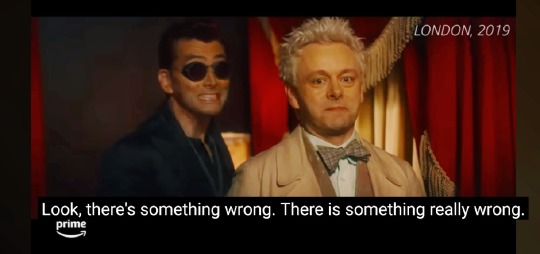
Wishing you lots of joy and luck, and sending my sincere appreciation for just being you!
First time I've seen it and it seems to think Season 1 and Season 2 all happen in 2019, doesn't it?
2K notes
·
View notes
Text
Lil Nas X featuring Billy Ray Cyrus - Old Town Road 2019
"Old Town Road" is the debut mainstream single by American rapper Lil Nas X, first released independently in December 2018. After gaining popularity, the single was re-released in March 2019. The rapper also recorded a remix with American country singer Billy Ray Cyrus, which was released on April 5, 2019. Both were included on Lil Nas X's second EP, 7 (2019). Dutch record producer YoungKio composed the instrumental and made it available for purchase online in 2018. It features a sample of "34 Ghosts IV" by the American industrial rockband Nine Inch Nails. The sample was placed behind trap-style Roland TR-808 drums and bass. Lil Nas X purchased the instrumental for US$30 and recorded "Old Town Road" in one day.
The song reached number 19 on the Billboard Hot Country Songs chart before the magazine disqualified it from the chart on the grounds that it did not "fit" the genre, sparking a debate on what constitutes the "definition" of country music. Though "Old Town Road" did not re-enter any country charts, both versions of the song collectively peaked at number 1 on the main Billboard Hot 100, remaining at the top for a record-breaking 19 consecutive weeks; the remix peaked at number 50 on Billboard's Country Airplay chart. "Old Town Road"'s overall run at number one is the longest in chart history, surpassing the previous record of sixteen weeks achieved by both "One Sweet Day" (poll #296) and "Despacito". One or more versions of "Old Town Road" have topped the national singles charts in Australia, Canada, France, Germany, Ireland, the Netherlands, New Zealand, Norway, Switzerland and the UK, and have charted in the top 10 in various other international markets.
The song was certified diamond by the RIAA in October 2019 for selling 10 million total units in the US, the fastest song to be certified diamond. At the 62nd Annual Grammy Awards, the remix featuring Billy Ray Cyrus was nominated for Record of the Year and won Best Pop Duo/Group Performance and Best Music Video. In September 2021, the song set the record for the second-highest certified song in history by the RIAA, at 16× platinum in the US - meaning it accumulated 16 million equivalent song units. The single has sold over 18 million copies worldwide, making it one of the best-selling singles of all time.
"Old Town Road" received a total of 80,6% yes votes!
youtube
771 notes
·
View notes
Text
.𖥔 ݁ ˖ 𝕲UESS ᝰ! 𝕯RAKE'S ROSTER



y/n has a cute little friend group of very important people… a lot of this au’s gonna be story mode with some sort of sm posts and things incorporated into it so bear with me. anyway here’s drake’s favourite kids—



𝖞/n l/n ᝰ @ynmn + @ilovewinning
golden globe’s best female lead; has been in multiple blockbuster hits, her filmography includes get out (2017), aftersun (2022), barbie (2023), and an mtv best show, euphoria (2019-present). as a marketing scheme for promoting the release of her new movie, longlegs, she’s trying to broaden her audience by starring in a music video for rising global pop group, katseye.


𝖇illie eilish ᝰ @billieeilish + @bilsleftnut
voted artist of the year; billie has known y/n since her “when we all fall asleep, where do we go” days. being one of billie’s closer friendships in the entertainment industry, y/n has featured in many of her music videos, including one for the song, “lunch” on hit me hard and soft. a horrible enabler but can sometimes give some decent advice that won’t get y/n in trouble (50/50).


𝖞unjin huh ᝰ @huhyunjin + @yunjinsalterego
k-pop’s 4th gen princess; yunjin befriended y/n at an american music festival through mutual friends. favorite hobby is clowning y/n. most chaotic member of the friend group but still manage to be the calmest most of the time. good buddies with yoonchae—one half of y/n’s ultimate guide to katseye.


𝖉ominic fike ᝰ @dominicfike + @df180346
hollywood’s ace; from the euphoria set (where he met y/n as a costar) to the stage, dominic has made his talents known and has been nicknamed hollywood’s ace after just a couple months since “sunburn”’s release. has known manon from katseye since her pre-debut, the other half of y/n’s ultimate guide to the katseye.

next. 𝜗𝜚⋆₊˚ masterlist.
#katseye x reader#katseye#katseye smau#daniela avanzini#daniela avanzini x reader#lara raj#lara raj x reader#manon bannerman#manon bannerman x reader#megan skiendiel#megan skiendiel x reader#sophia laforteza x reader#sophia laforteza#jeong yoonchae
68 notes
·
View notes
Text
THE HOLLYWOOD REPORTER
YouTuber Markiplier Got Passes From Everyone in Hollywood — So, He Made a Hit His Way
Podcast adaptation 'The Edge of Sleep' from New Regency spent the weekend on Amazon Prime Video's most watched TV chart, but, as the YouTuber and team reveals, it didn't get there through traditional channels.
In 2019, 'The Edge of Sleep', the latest offering from Mark Fischbach, known to his 37 million YouTube subscribers as Markiplier, was pitched to every major platform in Hollywood.
By then, 'The Edge of Sleep' was already a popular podcast. In fact, it quickly became the biggest genre narrative podcast of all time, with some 6 million downloads and counting. And for the television adaptation, Markiplier would be reprising his role as a night watchman, who attempts to survive a mysterious global crisis where anyone who goes to sleep dies. The podcast’s creators, Jake Emanuel and Willie Block, were on board to write and run the TV version, and Longlegs producer Brian Kavanaugh Jones was attached to produce. There would be six episodes, made on a relative shoestring budget, served up to a rapt audience that Markiplier has cultivated for more than a decade with a channel primarily focused on Let’s Play videos.
Curtis, who’s represented Markiplier for eight years, wasn’t particularly surprised by the deluge of nos. As he tells it, Hollywood has never been willing to take his client seriously. The feedback? “Oh, the YouTuber? No, thanks.’ Just totally dismissive,” he says via Zoom, insisting the entire reason that they did 'The Edge of Sleep' as a QCODE-produced podcast first was because they wanted something to be able to show skittish buyers when they ultimately shopped the TV adaptation. It was also the reason that Curtis, whose client roster over the years has included Rami Malek and Veep‘s Timothy Simons, urged Markiplier to do his second podcast, Distractible, an unscripted offering featuring him and a few buddies.
“I went to Mark three years ago and I said, ‘Hey, look, I’m not getting a lot of love and respect for you in the market, you should do a podcast because I know you can build one of the biggest podcasts in the world. And at that point, I think traditional Hollywood will say, “Oh wow, you just knocked out Joe Rogan from No. 1 on Spotify. Let’s pay attention,”’” says Curtis. “And then he did that, and people still didn’t care. It’s been seven years now of trying to get traditional Hollywood to pay attention.” (For the record, Spotify did, allegedly inking an eight-figure dealfor him to host video episodes of Distractible and other podcasts.)
Markiplier is considerably more diplomatic. “I’m trying to show people [in Hollywood] that there is a different way, but at the same time, I do understand the mistrust of some creators,” he tells THR, acknowledging it was daunting to leap from his own videos to large-scale productions, with crews in the hundreds, even for him, who had scaled up gradually. “A YouTuber going into that is used to doing everything themself, so to learn to both collaborate with others and to let go a little and trust those who are experts in their department, it’s tough — especially when you have a distributor or some production company overseeing it or paying for it who wants to have input. It’s hard, and YouTubers can be very egotistical.” (Though he was simply an actor-for-hire and not a creative engine on Edge of Sleep, Markiplier still managed to butt heads with his producers, including the time he insisted upon licensing and editing in a different opening theme song, which he ultimately did with his own money.)
Most in Markiplier’s situation would have cut their losses and moved on. He hardly needs Hollywood, after all. But he didn’t generate nearly 17 billion video views by doing what others would do. “And I have a desire to prove myself and prove that I can play at other people’s games just as well as they can,” he says. So, he and the team, which also includes Oddfellows’ Chris Ferguson and director Corey Adams, among others, decided to forgo the traditional route. Markiplier agreed to put up a portion of the financing, and figure out a distribution strategy later. On Kavanaugh Jones’ recommendation, New Regency was recruited to come aboard as the studio and foot the remainder of the bill.
So, with COVID-19 still raging, the cast and crew decamped to Vancouver in the summer of 2021. The shoot lasted 25 days across 35 different locations, a triumph given the protocols in place at the time. According to New Regency’s chairman and CEO Yariv Milchan, it was a bet worth taking. “New Regency has a history of recognizing potential where others haven’t. Projects like The Revenant and Bohemian Rhapsody had been overlooked for years, yet we saw their value and brought them to life,” he says via email, adding: “With The Edge of Sleep, we saw a different potential in the unique combination of the largely untapped creativity from Markiplier and his dedicated fanbase, along with the success of the original QCODE podcast. We were inspired by the challenge to create, together with Markiplier and QCODE, a series at the right budget while embracing innovative marketing approaches.” (Though everybody’s staying mum on said budget, it’s said to be a small fraction of a typical prestige drama.)
In 2023, with a nearly completed series, they took it out once more. This time, they did so with the first episode available for potential buyers to preview. Again, they were greeted with a succession of passes. Curtis, who’s also an executive producer on the project, isn’t even sure they bothered to open the link and sample it. “It was the same thing, ‘No.’ ‘No.’ ‘No.’ And that’s the point at which 99.9 percent of Hollywood quits, it’s over,” he says. “But we knew, with Mark, you have this special ingredient that people truly undervalue — and he’s a complete genius in marketing to his fans.”
He was confident that Markiplier could and would activate his audience. After all, he’d seen him do it many times before. A few years back, for instance, Markiplier had a YouTube channel called Unus Annus (“One Year” in Latin), where he posted a new video every day for a year, culminating in a 12-hour live stream on day 365 that ended with him deleting the entire channel. At one point, Curtis says there were 1.3 million concurrent viewers watching; and, in 24 hours, he says Markiplier managed to sell $19 million of merchandise. “And that was something that we couldn’t pay people to write about or talk about. No one cared,” says Curtis, who acknowledges he has a chip on his shoulder on his client’s behalf. “I mean, there’s less than 50 people in the entire world who could do that. We’re talking, like, Taylor Swift, Kardashian type stuff.”
Last month, Hollywood finally got its taste for Markiplier’s power. Over on YouTube, his platform of choice, he released a video announcing that Edge of Sleep would be coming out in a matter of weeks. That video, which didn’t even tell people where they could watch the series, racked up 3.5 million views. Then, on Oct. 18, the full season dropped on Amazon Prime Video via the Prime Video Direct content submission portal — or, technically, it was uploaded a few days before, for quality control. Almost instantly, and without any real promotion, it had broken into the Prime Video’s Top 10, where it remained, hovering around No. 6 or 7 through the weekend.
By Friday, a trailer dropped on both QCODE and New Regency’s social media, and Prime Video posted a clip on its social channels. A paid media buy launched that day, too. Later that evening, Markiplier called an “Emergency Meeting” of his fans, which turned into him hosting a three-hour livestream, during which he urged everyone to tune in and rate the series, as his goal now is to stay on the Top 10 TV chart for 30 days. In success, there will be a second season, and ideally distribution outside the U.S. According to the Amazon site, Content providers to Prime Video Direct receive 50 percent of net revenue for titles that are available to buy or rent. By Sunday, 1.2 million had checked out the livestream video just to hear him field questions about the making of the series, his first foray into scripted and dramatic TV. (He talked, too, about Iron Lung, a bloody film that he acts in and directs, for which he’s currently seeking a theatrical distributor.)
The irony of its success over on Prime Video, one of many platforms that passed on Edge of Sleep when it came through the traditional channels, is not lost on Markiplier or his rep. “We definitely want to break glass,” Curtis says. “We want people to pay attention to the fact that this guy who was told no over and over again is so powerful that he can launch a TV show to great success on his own.”
115 notes
·
View notes
Text
slime video analysed thru horror with a queer pov
kay it gets its own post because im stil aaa bout it
This is just what I remember/was able to brush up on, since I studied this in 2019, so if anything is outdated I apologise, feel free to correct me, I love to learn!!
also I realized it has all become a lil rambly as I couldn’t contain my excitement soz
So this is my essay on the parallels of queerness in the horror genre and how DanAndPhilCRAFTS - Slime (2024) could be analysed in this light, especially given the creators’ personal history with the topic.
Among the classic tropes of the horror genre, is the topic of losing ones innocence.
Most emphasised is the loss of ones virginity, as a synonym for the innocence, although the innocence as such has many forms. As mentioned in Scream (1996), you may not survive if you have sex, if you drink/do drugs, or if you claim to “be right back” or in other ways investigate to satisfy your own curiosity.
The parallels to the christian church and societal norms are already obvious. If you deviate from the path of purity, it will lead to death and suffering. The only way to survive the night, is to stay pure. Do not be tempted by mere curiosities, for they will be the death of you, essentially.
In the same light, Baphomet is most often portrayed with characteristics from both the male and female human anatomy, and can be used as a metaphor for the inherent evil of gender expressions beyond the societal norm.
In the same light, monsters in various movies are often shown with a deviance in gender and/or sexuality. This role of ‘sexual outsider’ has, for years, been a symbolism that queer people have connected with. The has only further skewed the ‘stay pure’ narrative, as it brings on an ambience of kill or be killed. An either/or of sorts. But it has also made monsters and villains walk the line between sexy and terrifying, which naturally leads people to be enticed. We are sexual creatures afterall.
Often the monsters have an aura of masculine energy, as they make people cower, and the stereotypical jocks abandon their hardcore exterior. This, on one hand birthed the “the boyfriend is the killer” trope, but it also gave way for diving into morality, how many crimes can a villain get away with, as long as the character resonates with the audience.
This is demonstrated in Jennifers Body (2009) which was, at first, marketed to the male audience, making the monster Jennifer an attractive young woman, essentially getting the film marked as “Twilight for boys” by film critic Robert Ebert.
The ratings, however, were lackluster and claimed the movie was neither funny nor scary and thus was unsuccessful. Jennifer wasn’t “as hot as you’d hope she’d be” and essentially the “lesbians-for-the-male-gaze” marketing to boys 17+ failed.
However, many women and young girls between 17-25 saw the character of Jennifer as empowering and resonated with the film. My theory is that the men did not like being the victim, being killed my something that they are supposed to be worse than. But the women saw a strength in the conflict between what is essentially two sides of the same existence - on one hand the rage of the injustice and gender inequality, and on the other hand Needy, who follows every character trope connected to the “last girl standing.” Except even she is tainted in the end, killing Jennifer and losing her innocence. (more talk about innocence, murder/virginity bla bla bla, okay but this essay aint about that)
All this plays a role in how the queerness of DanAndPhilCRAFTS - slime (2024) can be interpreted. Throughout all four installments of the narrative, Dan is seen being guided by Phil and scolded when he doesn’t do it right. Phil seems not at all surprised when Dans glitter face turns satanic, and by the third video, Phil hands the control over as he gives himself away.
Essentially, the indoctrination of Dans role in Phils devotion is cult-like. Cults are often hidden behind a facade of “found family” before the true behind-the-scenes terror is revealed. Dan is evidently comfortable in letting a more experienced person guide the way, despite his own hesitance. He knows that he cant do this halfway.
also the idea of Phil rising from the dead, during Easter… Jesus Christ, where would we even begin (lol)
But beyond that symbolism, It is the hesitance in Dans nature that seems to point to the “purity being tainted” horror trope. Phils devotion to Him is evident, but Dan seems more so to be devoted to Phil. A follower. Believing whatever Phil believes to be true. A Billy and Stu, Scream situation, if you will. The subtext of two lovers and the blurred lines of love and death, which has been analysed and discussed a whole while by smarter people than me.
Dans hesitance to follow Phil guiding him to the other (queer) side. The penetrative stab and the menacing disarray of emotions on Dans face afterwards. This was anything but a selfish act, but he gave into the curiosity, he is not the last survivor, he has joined Him. This ritual was giving into love, without trying to contain, rationalise, or diminish any part of it.
(Kind of how like dan, selfproclaimidly, would still be a ‘Daniel in denial’ if Phil hadn’t come into his life, because Phil ‘led him astray’ but he’s very okay with it and he has embraced it, and he’s happier giving in instead of fighting it?? Too far??)
#dan#phil#dan and phil#dnp#daniel howell#amazingphil#danandphil#dan howell#dandandphilgames#danandphilcrafts
190 notes
·
View notes
Text
Jikook Week 49 Complete (12/11-19/11/2024)
Their 49th week in the military is now complete. Today we are looking back at this week in 2019. On the 12/11, BTS headed to Helsinki to film the Winter Package 2020.


After arriving in Helsinki, they started filming with some friendly competitions and the formation of the teams that would explore the city together later. JK was paired with Namjoon, J-Hope, Jin and Jimin were the second team and Tae and Suga were the last team.
They then set about making snow globes each of which would be gifted later to another member whose name they had drawn from a Christmas sack. Here are the finished items.


Day Two - Their second day began with a shoot in the rain. I know this series of posts is all about Jikook but can we stop a moment to appreciate the peak fineness of Kim Namjoon here?

Deep breath while energetically fanning my face & back to Jikook.
What strikes me as I watch the filming of the Winter Package is that Jikook are rarely put in the same sub-unit for photos. If you just saw the pictures without the video you would never have a clue how behind the scenes they can always be found together.
In the first shoot we see them talking about how JK is filming what eventually became GCF Helsinki.




The 2nd location was a ski resort, and there, they are accompanying each others shoots and giggling as they dance together in the snow.



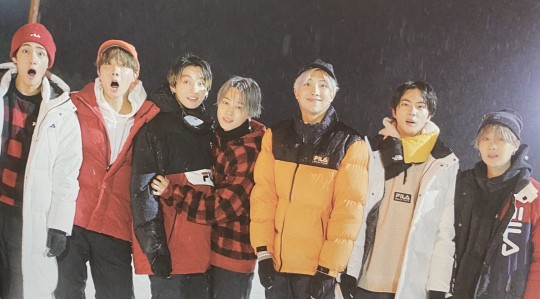
This was the first time JK had ever been to a ski resort...

....but it certainly wasn't the last.

That evening they wrote letters to ARMY. After a very long day filming, and being the beautiful soul that he is JK's emotions spilled out of him as he read his own extremely heartfelt letter. Jimin, JHope and Joon tried to make him feel better first by hugging him and second by changing the focus away from him to more comic things.


Day Three The next day BTS took the ferry to Suomenlinna for another photoshoot. Jimin was stunning with his grey hair and a long red coat.

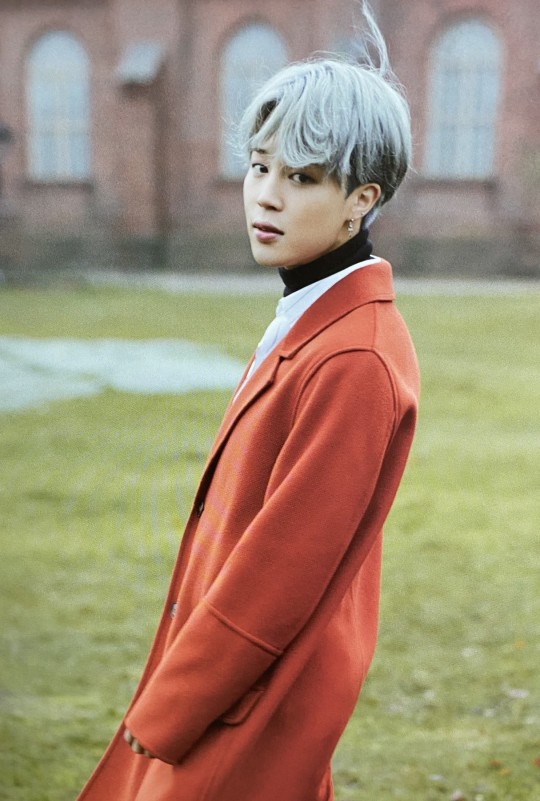
Jungkook was also pleased to have his human hot water bottle on hand to warm up his hands.

This was followed by unit shoots at the hotel & on the magical night streets of Helsinki.

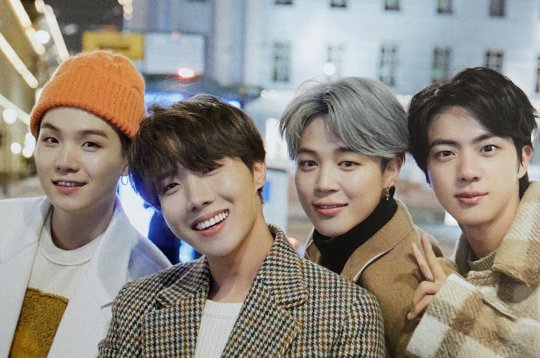


Day 4 was set aside for unit activities. JK and RM went to shoot at a park by the sea. Jimin went to a local market with Jin and JHope where he bought himself a fetching new winter hat.
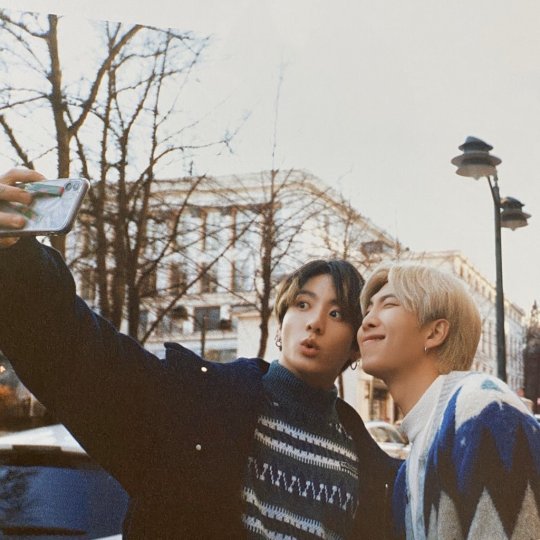
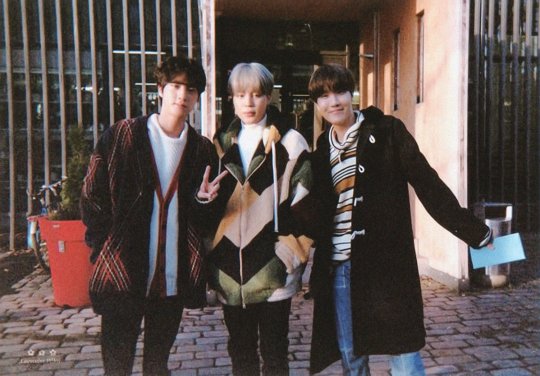

Their last activity was an exchange of gifts in the local park. Presents were distributed as follows: Jk to Tae, Tae to RM, RM to Jin, Jin to Jimin, Jimin to Suga, Suga to JK, JHope to JHope.

On 16/11 BTS arrived back in Seoul. A busy but enjoyable few days for everyone concerned.


Winter Package Part 1, Part 2
Post Date: 19/11/2024
57 notes
·
View notes
Text
in every video that's been coming out lately about stalls and changes in the U.S. economy, there's this incredibly charged silence in all of them.
for example, i was watching a video on what happened to cause the decline of 'mid-budget films'. all sorts of factors were discussed, from the streaming wars, to corporate consolidation, to low attendance in theaters. all true, yet... low attendance in theaters is attributed to streaming, market pressures, and big names not pulling people in- also true.
but not once was the fact that 1,140,278 people in the U.S. alone have died since 2023 mentioned.
there are 1,140,278 less people to fill those theater seats than there were in 2019. That is 1,140,278 less people making, shipping, and selling our goods. that is 1,140,278 less people taking their earnings home and spending what little they have left on those goods, the only thing keeping our manchild-ran economy from crumbling into recession.
our workforce decreased by 1,140,278 less people because you KNOW it was the working class, out there dying for everyone else. our workforce decreased by 1,140,278 less people due to one cause alone.
but no one says it. no one factors it in. countless thinkpieces, videos, news segments, conversations overheard in packed restaurants full of maskless, spitting faces about how our economy is crumbling under its own weight because of the internet, because of countless natural disasters battering our country from all sides, because of global trade, because of anything but the factor that we lost 1,140,278 people to preventable causes.
this 1,140,278 people, gone from our lives, and this doesn't even begin to touch the number of people permanently disabled, unable to work. but that number is far bigger than we can reliably calculate. more than we could begin to process.
this, by the way, is the number for the U.S. only. the country i live in, who ranks second worldwide in deaths per million due to this one cause.
and after three years of this constant, ongoing mass dying, we don't say its name. there's an eerie silence around it, a gaping hole we dare not touch. lest we violate some sort of social rule, heaven forbid. we spit on the deaths of those 1,140,278 people every time we forget, and every time we let our government get away with not protecting or caring about its people.
tell me, when was the last time you acknowledged COVID?
#covid19#heavy stuff#im just. angry#grieving#and offput by this eerie hole in the discussion of. anything#those were all people with fucking lives.#edit: added a paragraph acknowledging how many are left not dead but disabled#as that is a huge part of this too
640 notes
·
View notes
Text
In 2006, the year Taylor Swift released her first single, a closeted country singer named Chely Wright, then 35, held a 9-millimeter pistol to her mouth. Queer identity was still taboo enough in mainstream America that speaking about her love for another woman would have spelled the end of a country music career. But in suppressing her identity, Ms. Wright had risked her life.
In 2010, she came out to the public, releasing a confessional memoir, “Like Me,” in which she wrote that country music was characterized by culturally enforced closeting, where queer stars would be seen as unworthy of investment unless they lied about their lives. “Country music,” she wrote, “is like the military — don’t ask, don’t tell.”
The culture in which Ms. Wright picked up that gun — the same one in which Ms. Swift first became a star — was stunningly different from today’s. It’s dizzying to think about the strides that have been made in Americans’ acceptance of the L.G.B.T.Q. community over the past decade: marriage equality, queer themes dominating teen entertainment, anti-discrimination laws in housing and, for now, in the workplace. But in recent years, a steady drip of now-out stars — Cara Delevingne, Colton Haynes, Elliot Page, Kristen Stewart, Raven-Symoné and Sam Smith among them — have disclosed that they had been encouraged to suppress their queerness in order to market projects or remain bankable.
The culture of country music hasn’t changed so much that homophobia is gone. Just this past summer, Adam Mac, an openly gay country artist, was shamed out of playing at a festival in his hometown because of his sexual orientation. In September, the singer Maren Morris stepped away from country music; she said she did so in part because of the industry’s lingering anti-queerness. If country music hasn’t changed enough, what’s to say that the larger entertainment industry — and, by extension, our broader culture — has?
Periodically, I return to a video, recorded by a shaky hand more than a decade ago, of Ms. Wright answering questions at a Borders bookstore about her coming out. She likens closeted stardom to a blender, an “insane” and “inhumane” heteronormative machine in which queer artists are chewed to bits.
“It’s going to keep going,” Ms. Wright says, “until someone who has something to lose stands up and just says ‘I’m gay.’ Somebody big.” She continues: “We need our heroes.”
What if someone had already tried, at least once, to change the culture by becoming such a hero? What if, because our culture had yet to come to terms with homophobia, it wasn’t ready for her?
What if that hero’s name was Taylor Alison Swift?
In the world of Taylor Swift, the start of a new “era” means the release of new art (an album and the paratexts — music videos, promotional ephemera, narratives — that supplement it) and a wholesale remaking of the aesthetics that will accompany its promotion, release and memorializing. In recent years, Ms. Swift has dominated pop culture to such a degree that these transformations often end up altering American culture in the process.
In 2019, she was set to release a new album, “Lover,” the first since she left Big Machine Records, her old Nashville-based label, which she has since said limited her creative freedom. The aesthetic of what would be known as the “Lover Era” emerged as rainbows, butterflies and pastel shades of blue, purple and pink, colors that subtly evoke the bisexual pride flag.
On April 26, Lesbian Visibility Day, Ms. Swift released the album’s lead single, “ME!,” in which she sings about self-love and self-acceptance. She co-directed a campy music video to accompany it, which she would later describe as depicting “everything that makes me, me.” It features Ms. Swift dancing at a pride parade, dripping in rainbow paint and turning down a man’s marriage proposal in exchange for a … pussy cat.
At the end of June, the L.G.B.T.Q. community would celebrate the 50th anniversary of the Stonewall Riots. On June 14, Ms. Swift released the video for her attempt at a pride anthem, “You Need to Calm Down,” in which she and an army of queer celebrities from across generations — the “Queer Eye” hosts, Ellen DeGeneres, Billy Porter, Hayley Kiyoko, to name a few — resist homophobia by living openly. Ms. Swift sings that outrage against queer visibility is a waste of time and energy: “Why are you mad, when you could be GLAAD?”
The video ends with a plea: “Let’s show our pride by demanding that, on a national level, our laws truly treat all of our citizens equally.” Many, in the press and otherwise, saw the video as, at best, a misguided attempt at allyship and, at worst, a straight woman co-opting queer aesthetics and narratives to promote a commercial product.
Then, Ms. Swift performed “Shake It Off” as a surprise for patrons at the Stonewall Inn. Rumors — that were, perhaps, little more than fantasies — swirled in the queerer corners of her fandom, stoked by a suggestive post by the fashion designer Christian Siriano. Would Ms. Swift attend New York City’s WorldPride march on June 30? Would she wear a dress spun from a rainbow? Would she give a speech? If she did, what would she declare about herself?
The Sunday of the march, those fantasies stopped. She announced that the music executive Scooter Braun, who she described as an “incessant, manipulative” bully, had purchased her masters, the lucrative original recordings of her work.
Ms. Swift’s “Lover” was the first record that she created with nearly unchecked creative freedom. Lacking her old label’s constraints, she specifically chose to feature activism for and the aesthetics of the L.G.B.T.Q. community in her confessional, self-expressive art. Even before the sale of her masters, she appeared to be stepping into a new identity — not just an aesthetic — that was distinct from that associated with her past six albums.
When looking back on the artifacts of the months before that album’s release, any close reader of Ms. Swift has a choice. We can consider the album’s aesthetics and activism as performative allyship, as they were largely considered to be at the time. Or we can ask a question, knowing full well that we may never learn the answer: What if the “Lover Era” was merely Ms. Swift’s attempt to douse her work — and herself — in rainbows, as so many baby queers feel compelled to do as they come out to the world?
There’s no way of knowing what could have happened if Ms. Swift’s masters hadn’t been sold. All we know is what happened next. In early August, Ms. Swift posted a rainbow-glazed photo of a series of friendship bracelets, one of which says “PROUD” with beads in the color of the bisexual pride flag. Queer people recognize that this word, deployed this way, typically means that someone is proud of their own identity. But the public did not widely view this as Ms. Swift’s coming out.
Then, Vogue released an interview with Ms. Swift that had been conducted in early June. When discussing her motivations for releasing “You Need to Calm Down,” Ms. Swift said, “Rights are being stripped from basically everyone who isn’t a straight white cisgender male.” She continued: “I didn’t realize until recently that I could advocate for a community that I’m not a part of.” That statement suggests that Ms. Swift did not, in early June, consider herself part of the L.G.B.T.Q. community; it does not illuminate whether that is because she was a straight, cis ally or because she was stuck in the shadowy, solitary recesses of the closet.
On Aug. 22, Ms. Swift publicly committed herself to the as-of-then-unproven project of rerecording and rereleasing her first six albums. The next day, she finally released “Lover,” which raises more questions than it answers. Why does she have to keep secrets just to keep her muse, as all her fans still sing-scream on “Cruel Summer”? About what are the “hundred thrown-out speeches I almost said to you,” in her chronicle of self-doubt, “The Archer,” if not her identity? And what could the album’s closing words, which come at the conclusion of “Daylight,” a song about stepping out of a 20-year darkness and choosing to “let it go,” possibly signal?
I want to be defined by the things that I love,
Not the things I hate,
Not the things that I’m afraid of, I’m afraid of,
Not the things that haunt me in the middle of the night,
I just think that,
You are what you love.
The first time I viewed “Lover” through the prism of queerness, I felt delirious, almost insane. I kept wondering whether what I was perceiving in her work was truly there or if it was merely a mirage, born of earnest projection.
My longtime reading of Ms. Swift’s celebrity — like that of a majority of her fan base — had been stuck in the lingering assumptions left by a period that began more than a decade and a half ago, when a girl with an overexaggerated twang, Shirley Temple curls and Georgia stars in her eyes became famous. Then, she presented as all that was to be expected of a young starlet: attractive yet virginal, knowing yet naïve, not talented enough to be formidable, not commanding enough to be threatening, confessional, eager to please. Her songs earnestly depicted the fantasies of a girl raised in a traditional culture: high school crushes and backwoods drives, princelings and wedding rings, declarations of love that climax only in a kiss — ideally in the pouring rain.
When Ms. Swift was trying to sell albums in that late-2000s media environment, her songwriting didn’t match the image of a sex object, the usual role reserved for female celebrities in our culture. Instead, the story the public told about her was that she laundered her affection to a litter of promising grown men, in exchange for songwriting inspiration. A young Ms. Swift contributed to this narrative by hiding easy-to-decode clues in liner notes that suggested a certain someone was her songs’ inspiration (“SAM SAM SAM SAM SAM SAM,” “ADAM,” “TAY”) or calling out an ex-boyfriend on the “Ellen” show and “Saturday Night Live.” Despite the expansive storytelling in Ms. Swift’s early records, her public image often cast a man’s interest as her greatest ambition.
As Ms. Swift’s career progressed, she began to remake that image: changing her style and presentation, leaving country music for pop and moving from Nashville to New York. By 2019, her celebrity no longer reflected traditional culture; it had instead become a girlboss-y mirror for another dominant culture — that of white, cosmopolitan, neoliberal America.
But in every incarnation, the public has largely seen those songs — especially those for which she doesn’t directly state her inspiration — as cantos about her most recent heterosexual love, whether that idea is substantiated by evidence or not. A large portion of her base still relishes debating what might have happened with the gentleman caller who supposedly inspired her latest album. Feverish discussions of her escapades with the latest yassified London Boy or mustachioed Mr. Americana fuel the tabloid press — and, embarrassingly, much of traditional media — that courts fan engagement by relentlessly, unquestioningly chronicling Ms. Swift’s love life.
Even in 2023, public discussion about the romantic entanglements of Ms. Swift, 34, presumes that the right man will “finally” mean the end of her persistent husbandlessness and childlessness. Whatever you make of Ms. Swift’s extracurricular activities involving a certain football star (romance for the ages? strategic brand partnership? performance art for entertainment’s sake?), the public’s obsession with the relationship has been attention-grabbing, if not lucrative, for all parties, while reinforcing a story that America has long loved to tell about Ms. Swift, and by extension, itself.
Because Ms. Swift hasn’t undeniably subverted our culture’s traditional expectations, she has managed, in an increasingly fractured cultural environment, to simultaneously capture two dominant cultures — traditional and cosmopolitan. To maintain the stranglehold she has on pop culture, Ms. Swift must continue to tell a story that those audiences expect to consume; she falls in love with a man or she gets revenge. As a result, her confessional songs languish in a place of presumed stasis; even as their meaning has grown deeper and their craft more intricate, a substantial portion of her audience’s understanding of them remains wedded to the same old narratives.
But if interpretations of Ms. Swift’s art often languish in stasis, so do the millions upon millions of people who love to play with the dollhouse she has constructed for them. Her dominance in pop culture and the success of her business have given her the rare ability to influence not only her industry but also the worldview of a substantial portion of America. How might her industry, our culture and we, ourselves, change if we made space for Ms. Swift to burn that dollhouse to the ground?
Anyone considering the whole of Ms. Swift’s artistry — the way that her brilliantly calculated celebrity mixes with her soul-baring art — can find discrepancies between the story that underpins her celebrity and the one captured by her songs. One such gap can be found in her “Lover” era. Others appear alongside “dropped hairpins,” or the covert ways someone can signal queer identity to those in the know while leaving others comfortable in their ignorance. Ms. Swift dropped hairpins before “Lover” and has continued to do so since.
Sometimes, Ms. Swift communicates through explicit sartorial choices — hair the colors of the bisexual pride flag or a recurring motif of rainbow dresses. She frequently depicts herself as trapped in glass closets or, well, in regular closets. She drops hairpins on tour as well, paying tribute to the Serpentine Dance of the lesbian artist Loie Fuller during the Reputation Tour or referencing “The Ladder,” one of the earliest lesbian publications in the United States, in her Eras Tour visuals.
During the Eras Tour, Ms. Swift traps her past selves — including those from her “Lover” era — in glass closets.
Dropped hairpins also appear in Ms. Swift’s songwriting. Sometimes, the description of a muse — the subject of her song, or to whom she sings — seems to fit only a woman, as it does in “It’s Nice to Have a Friend,” “Maroon” or “Hits Different.” Sometimes she suggests a female muse through unfulfilled rhyme schemes, as she does in “The Very First Night,” when she sings “didn’t read the note on the Polaroid picture / they don’t know how much I miss you” (“her,” instead of that pesky little “you,” would rhyme). Her songwriting also noticeably alludes to poets whose muses the historical record incorrectly cast as men — Emily Dickinson chief among them — as if to suggest the same fate awaits her art. Stunningly, she even explicitly refers to dropping hairpins, not once, but twice, on two separate albums.
In isolation, a single dropped hairpin is perhaps meaningless or accidental, but considered together, they’re the unfurling of a ballerina bun after a long performance. Those dropped hairpins began to appear in Ms. Swift’s artistry long before queer identity was undeniably marketable to mainstream America. They suggest to queer people that she is one of us. They also suggest that her art may be far more complex than the eclipsing nature of her celebrity may allow, even now.
Since at least her “Lover” era, Ms. Swift has explicitly encouraged her fans to read into the coded messages (which she calls “Easter eggs”) she leaves in music videos, social media posts and interviews with traditional media outlets, but a majority of those fans largely ignore or discount the dropped hairpins that might hint at queer identity. For them, acknowledging even the possibility that Ms. Swift could be queer would irrevocably alter the way they connect with her celebrity, the true product they’re consuming.
There is such public devotion to the traditional narrative Ms. Swift embodies because American culture enshrines male power. In her sweeping essay, “Compulsory Heterosexuality and Lesbian Existence,” the lesbian feminist poet Adrienne Rich identified the way that male power cramps, hinders or devalues women’s creativity. All of the sexist undertones with which Ms. Swift’s work can be discussed (often, even, by fans) flow from compulsory heterosexuality, or the way patriarchy draws power from the presumption that women naturally desire men. She must write about men she surely loves or be unbankable; she must marry and bear children or remain a child herself; she must look like, in her words, a “sexy baby” or be undesirable, “a monster on the hill.”
A woman who loves women is most certainly a monster to a society that prizes male power. She can fulfill none of the functions that a traditional culture imagines — wife, mother, maid, mistress, whore — so she has few places in the historical record. The Sapphic possibility of her work is ignored, censored or lost to time. If there is queerness earnestly implied in Ms. Swift’s work, then it’s no wonder that it, like that of so many other artists before her, is so often rendered invisible in the public imagination.
While Ms. Swift’s songs, largely written from her own perspective, cannot always conform to the idea of a woman our culture expects, her celebrity can. That separation, between Swift the songwriter and Swift the star, allows Ms. Swift to press against the golden birdcage in which she has found herself. She can write about women’s complexity in her confessional songs, but if ever she chooses not to publicly comply with the dominant culture’s fantasy, she will remain uncategorizable, and therefore, unsellable.
Her star — as bright as it is now — would surely dim.
Whether she is conscious of it or not, Ms. Swift signals to queer people — in the language we use to communicate with one another — that she has some affinity for queer identity. There are some queer people who would say that through this sort of signaling, she has already come out, at least to us. But what about coming out in a language the rest of the public will understand?
The difference between any person coming out and a celebrity doing so is the difference between a toy mallet and a sledgehammer. It’s reasonable for celebrities to be reticent; by coming out, they potentially invite death threats, a dogged tabloid press that will track their lovers instead of their beards, the excavation of their past lives, a torrent of public criticism and the implosion of their careers. In a culture of compulsory heterosexuality, to stop lying — by omission or otherwise — is to risk everything.
American culture still expects that stars are cis and straight until they confess themselves guilty. So, when our culture imagines a celebrity’s coming out, it expects an Ellen-style announcement that will submerge the past life in phoenix fire and rebirth the celebrity in a new image. In an ideal culture, wearing a bracelet that says “PROUD,” waving a pride flag onstage, placing a rainbow in album artwork or suggestively answering fan questions on Instagram would be enough. But our current reality expects a supernova.
Because of that expectation, stars end up trapped behind glass, which is reinforced by the tabloid press’s subtle social control. That press shapes the public’s expectations of others’ identities, even when those identities are chasms away from reality. Celebrities who master this press environment — Ms. Swift included — can bolster their business, but in doing so, they reinforce a heteronormative culture that obsesses over pregnancy, women’s bodies and their relationships with men.
That environment is at odds with the American movement for L.G.B.T.Q. equality, which still has fights to win — most pressingly, enshrining trans rights and squashing nonsensical culture wars. But lately I’ve heard many of my young queer contemporaries — and the occasional star — wonder whether the movement has come far enough to dispense with the often messy, often uncomfortable process of coming out, over and over again.
That questioning speaks to an earnest conundrum that queer people confront regularly: Do we live in this world, or the world to which we ought to aspire?
Living in aspiration means ignoring the convention of coming out in favor of just … existing. This is easier for those who can pass as cis and straight if need be, those who are so wealthy or white that the burden of hiding falls to others and those who live in accepting urban enclaves. This is a queer life without friction; coming out in a way straight people can see is no longer a prerequisite for acceptance, fulfillment and equality.
This aspiration is tremendous, but in our current culture, it is available only to a privileged few. Should such an inequality of access to aspiration become the accepted state of affairs, it would leave those who can’t hide to face society’s cruelest actors without the backing of a vocal, activated community. So every queer person who takes issue with the idea that we must come out ought to ask a simple question — what do we owe one another?
If coming out is primarily supposed to be an act of self-actualization, to form our own identities, then we owe one another nothing. This posture recognizes that the act of coming out implicitly reinforces straight and cis identities as default, which is not worth the rewards of outness.
But if coming out is supposed to be a radical act of resistance that seeks to change the way our society imagines people to be, then undeniable visibility is essential to make space for those without power. In this posture, queer people who can live in aspiration owe those who cannot a real world in which our expansive views of love and gender aren’t merely tolerated but celebrated. We have no choice but to actively, vocally press against the world we’re in, until no one is stuck in it.
And so just for a little while longer, we need our heroes.
But if queer people spend all of our time holding out for a guiding light, we might forgo a more pressing question that if answered, just might inch all of us a bit closer to aspiration. The next time heroes appear, are we ready to receive them?
It takes neither a genius nor a radical to see queerness implied by Ms. Swift’s work. But figuring out how to talk about it before the star labels herself is another matter. Right now, those who do so must inject our perceptions with caveats and doubt or pretend we cannot see it (a lie!) — implicitly acquiescing to convention’s constraints in the name of solidarity.
Lying is familiar to queer people; we teach ourselves to do it from an early age, shrouding our identities from others, and ourselves. It’s not without good reason. To maintain the safety (and sometimes the comfort) of the closet, we lie to others, and, most crucially, we allow others to believe lies about us, seeing us as something other than ourselves. Lying is doubly familiar to those of us who are women. To reduce friction, so many of us still shrink life to its barest version in the name of honor or safety, rendering our lives incomplete, our minds lobotomized and our identities unexplored.
By maintaining a culture of lying about what we, uniquely, have the knowledge and experience to see, we commit ourselves to a vow of silence. That vow may protect someone’s safety, but when it is applied to works of culture, it stymies our ability to receive art that has the potential to change or disrupt us. As those with queer identity amass the power of commonplaceness, it’s worth questioning whether the purpose of one of the last great taboos that constrains us befits its cost.
In every case, is the best form of solidarity still silence?
I know that discussing the potential of a star’s queerness before a formal declaration of identity feels, to some, too salacious and gossip-fueled to be worthy of discussion. They might point to the viciousness of the discourse around “queerbaiting” (in which I have participated); to the harm caused by the tabloid press’s dalliances with outing; and, most crucially, to the real material sacrifices that queer stars make to come out, again and again, as reasons to stay silent.
I share many of these reservations. But the stories that dominate our collective imagination shape what our culture permits artists and their audiences to say and be. Every time an artist signals queerness and that transmission falls on deaf ears, that signal dies. Recognizing the possibility of queerness — while being conscious of the difference between possibility and certainty — keeps that signal alive.
So, whatever you make of Ms. Swift’s sexual orientation or gender identity (something that is knowable, perhaps, only to her) or the exact identity of her muses (something better left a mystery), choosing to acknowledge the Sapphic possibility of her work has the potential to cut an audience that is too often constrained by history, expectation and capital loose from the burdens of our culture.
To start, consider what Ms. Swift wrote in the liner notes of her 2017 album, “reputation”: “When this album comes out, gossip blogs will scour the lyrics for the men they can attribute to each song, as if the inspiration for music is as simple and basic as a paternity test.”
Listen to her. At the very least, resist the urge to assume that when Ms. Swift calls the object of her affection “you” in a song, she’s talking about a man with whom she’s been photographed. Just that simple choice opens up a world of Swiftian wordplay. She often plays with pronouns, trading “you” and “him” so that only someone looking for a distinction between two characters might find one. Turns of phrase often contain double or even triple meanings. Her work is a feast laid specifically for the close listener.
Choosing to read closely can also train the mind to resist the image of an unmarried woman that compulsory heterosexuality expects. And even if it is only her audience who points at rainbows, reading Ms. Swift’s work as queer is still worthwhile, for it undermines the assumption that queer identity impedes pop superstardom, paving the way for an out artist to have the success Ms. Swift has.
After all, would it truly be better to wait to talk about any of this for 50, 60, 70 years, until Ms. Swift whispers her life story to a biographer? Or for a century or more, when Ms. Swift’s grandniece donates her diaries to some academic library, for scholars to pore over? To ensure that mea culpas come only when Ms. Swift’s bones have turned to dust and fragments of her songs float away on memory’s summer breeze?
I think not. And so, I must say, as loudly as I can, “I can see you,” even if I risk foolishness for doing so.
I remember the first time I knew I had seen Taylor Alison Swift break free from the trap of stardom. I wasn’t sitting in a crowded stadium in the pouring rain or cuddled up in a movie theater with a bag of popcorn. I was watching a grainy, crackling livestream of the Eras Tour, captured on a fan’s phone.
It’s late at night, the beginning of her acoustic set of surprise songs, this time performed in a yellow dress. She begins playing “Hits Different.” It’s a new song, full of puns, double entendres and wordplay, that toys with the glittering identities in which Ms. Swift indulges.
She’s rushing, as if stopping, even for a second, will cause her to lose her nerve. She stumbles at the bridge, pauses and starts again; the queen of bridges will not mess this up, not tonight.
There it is, at the bridge’s end: “Bet I could still melt your world; argumentative, antithetical dream girl.” An undeniable declaration of love to a woman. As soon as those words leave her lips, she lets out a whoop, pacing around the stage with a grin that cannot be contained.
For a moment, Ms. Swift was out of the woods she had created for herself as a teenager, floating above the trees. The future was within reach; she would, and will, soon take back the rest of her words, her reputation, her name. Maybe the world would see her, maybe it wouldn’t.
But on that stage, she found herself. I was there. Through a fuzzy fancam, I saw it.
And somehow, that was everything.
#ooooh my word this was BREATHTAKING and so well-said#because coming out is in fact a very delicate thing#full article here for the tumblr crowd!#taylor swift#articles#new york times#gaylor swift#gaylor#lover#chely wright
241 notes
·
View notes
Text
You know after watching James Somerton's dog shit Killing Stalking vid, I don't know how people didn't notice the racism.
He literally just analysed it from a western culture lens and divorced it from the culture it did come from.
As well as refusing to do any research into why it's classed as a romance. Pretending that straight women and the publishers were behind the categorisation of it as a romance. When it was marketed as a Boy's Love manhwa in its native country of South Korea. Meaning the whole point was you are meant to ship the characters together. Plus Boy's Love is a genre for a majority female audience. Who are mostly queer in some way.
He also complained about the sex scenes. Like the sex is there for people to get off to. Because even porn can have artistic merit and be a horror story. Sex and horror go hand in hand after all.
The most egregious thing was him bringing up an interview Koogi did in 2018 while KS was still being serialised to prove it wasn't a love story. Completely ignoring a different interview she did in 2019 once the story was over to confirm Sangwoo loved Bum.
Throughout that god-forsaken video he kept mispronouncing the characters names. Like he kept calling Bum things like bomb and balm while also always calling him Yoonbum, when Yoon is actually his family name and Bum is given name. And forever saying Sangwo instead of Sangwoo unless I'm wrong about that but I doubt it.
His anti Asian racism is so fucking blatant the only reason people didn't fucking say anything because it was hating on a comic that they disliked for being queer in the wrong way.
So if you did like James Somerton and didn't notice the racism, please check your biases. Talk to those of us who are into BL as a genre and actually listen to us when we say it's not straight girls fetishising gay men. It's usually queer people who enjoy our media to be different from what the West has to offer. Most of us aren't white either.
And if you liked the Untamed, I'm sad to break it to you but that was also a BL novel written by a woman who wrote kinky gay sex.
191 notes
·
View notes
Text
Was Good Omens season 2 set during 2019? Who can say? Maybe Neil Gaiman, but probably not the Amazon Prime marketing department... (?!)
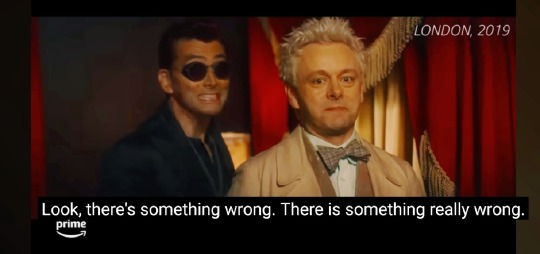
From Aziraphale & Crowley's Timeline of Interconnectedness - released yesterday by Prime Video's YouTube channel.
They're also rather vague about some of the other dates, and scenes from the present day of seasons 1 and 2 are mixed together. I assume this is just weird marketing. Unless it's a Clue? 😅
Edit: Neil says "First time I've seen it and it seems to think Season 1 and Season 2 all happen in 2019, doesn't it?"
I'm going to file this under the "wibbly wobbly timey wimey" category of Good Omens shenanigans...
With thanks to members of the @ineffable-detective-agency for pointing this out!
#ineffable mystery#wibbly wobbly timey wimey#good omens#good omens season 2#good omens analysis#good omens meta#good omens timeline#ineffable husbands#crowley#aziraphale#amazon prime#neil gaiman#good omens clues#good omens fandom
138 notes
·
View notes
Text
Alex Weprin at THR:
A prime piece of TV real estate is hitting the open market: new episodes of Sesame Street. The long-running children’s series is looking for a new home for its original episodes, after Warner Bros. Discovery opted not to renew the Sesame output deal with HBO and Max. That being said, Max is staying in business with the show’s producer Sesame Workshop, with the streaming service continuing to license episodes from the Sesame library through 2027. In addition, the current season of Sesame Street, season 55, will still be available on Max beginning next month. The decision not to continue the deal for new episodes stems from a change in strategy, with Max pivoting to focus more on adult and family programming, and placing less emphasis on kids fare like Sesame. Sesame Street had been on HBO since 2016 (episodes also air on PBS a few months after they run on HBO, allowing for maximum reach and accessibility, as alluded to by the Sesame spokesperson), with the companies last striking a five-year deal in 2019 that moved the show to HBO Max and Max. The show could draw substantial attention from a number of major players, not only because of the marquee name, but also because of its library of episodes, which span more than five decades. Max had pulled hundreds of older episodes two years ago as part of cost-saving measures at the company. It is not clear whether the library deal with Max would prohibit potential partners for new episodes from acquiring the library episodes. Streaming services like Netflix, Apple TV+ or Prime Video could be eager to beef up their services with arguably the best-known children’s show of all time.
Sesame Street won’t be making new episodes, as HBO and Max opted not to renew their deal to make more episodes. PBS, the show’s original home, has aired those episodes on a several-months delay.
Various streamers are lining up for the chance to acquire the rights to the show’s over 5 decades worth of episodes and maybe make new episodes.
22 notes
·
View notes
Text
How old is Carol Danvers???
(Inspired by a post by @blindluck which was in turn inspired by a post by me and @marvelsassbutts )
So I just found out the official Captain Marvel wiki places Carol Danvers’s birth date in 1965. At first I thought “that’s ridiculous” for reasons that will become clear through this long ass post. But then I saw they cited drawings by the assistant art director on Captain Marvel, found on her portfolio! That’s pretty official!

Wait what’s that at the bottom…
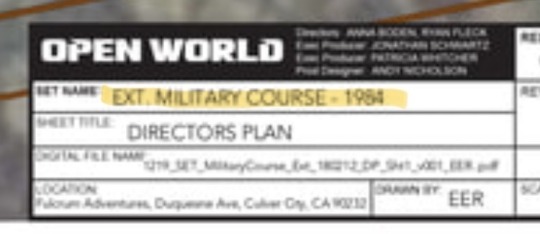
1984???? For Carol’s USAFA basic training???? This is impossible, the movie is wrong, and here’s why.
(Excerpt from my future video essay incoming)
There are no dates in Higher, Further, Faster; the marketing text on Amazon, Liza Palmer’s website, etc just says “80s.” So, we need to do some detective work.
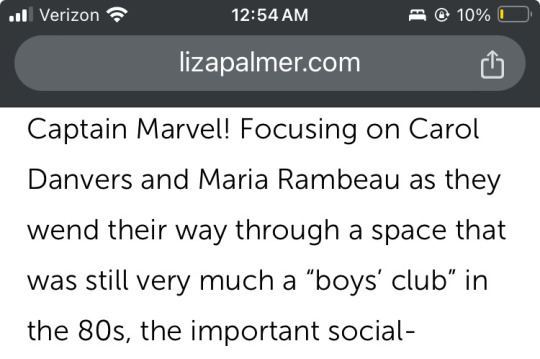
We know that the 2019 film Captain Marvel takes place in 1995. Since it takes place in Southern California and Louisiana, the warm weather doesn’t tell us much about the time of year. Personally, I believe it takes place on March 8, 1995, because that’s the exact day I was born, and my birthday is the day the movie was released on to coincide with International Women’s Day. Regardless, Monica Rambeau is eleven years old in the film, putting her birth in 1983 or 1984. So, Maria’s pregnancy must have begun in 1982 or 1983.
Here’s a “fun” fact about US military academies: until less than one year ago (summer 2023, a full three years after Captain Marvel came out), cadets at USAFA who became pregnant were required to either drop out, have an abortion, or relinquish their parental rights to their child.

Dropping out also means reimbursing the government for your tuition for all classes you’ve taken up to this point, and giving up your ability to be commissioned as a second lieutenant in the Air Force upon graduation. Definitely not an option someone as driven as Maria wants to consider. In fact, we know this isn’t what happened, because this news article Carol hung up in her spaceship in The Marvels says that Maria Rambeau is a USAFA graduate.
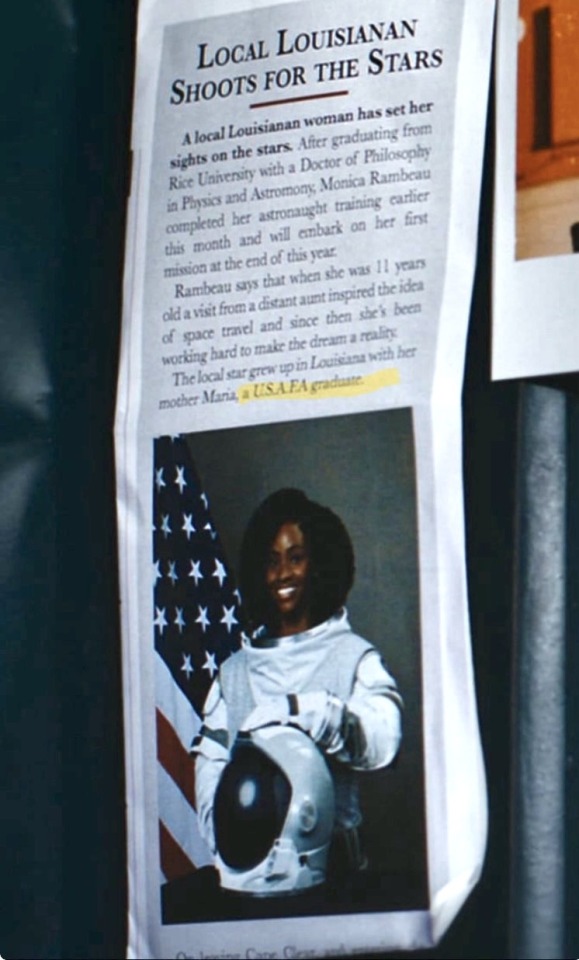
We also know that Maria didn’t have an abortion, because, well, Monica Rambeau herself is tangible evidence. Theoretically, it is possible for Maria to have given up parental rights and adopted back her own child after graduation. Before the policy change in 2023 that allowed cadets to be parents, many found this to be their best option (see the article I screenshotted above). However, this process is really expensive and takes a lot of work with a lawyer over a period of months or years. From the little we know of Carol and Maria’s life pre-crash, (it was busy, they lived in an expensive area, and Maria only had Carol for support), I think we can assume that it’s less likely that Maria was forced to adopt her own daughter than that Maria graduated USAFA before becoming pregnant in 1982 or 83.
That still doesn’t answer the question of when this book takes place, though. The exact year is important, as the military had some major differences under the Gerald Ford, Jimmy Carter, and Ronald Reagan administrations of the 70s and 80s, and one of the things I want to assess this book on is accuracy.
Oh wait, what’s that? Another discriminatory policy that helps us date this book? That’s right, USAFA didn’t enroll women as cadets until Public Law 94-106 went into effect in 1976.
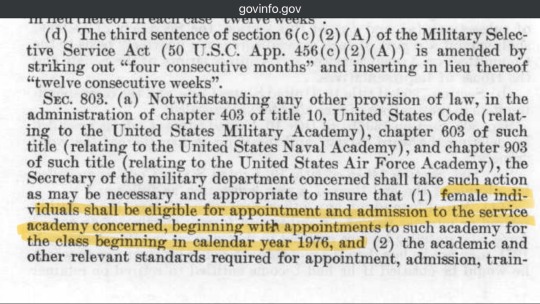
What’s more, Carol and Maria cannot have been part of this first group of women cadets, because in the book, there is an upperclassman character who is a woman. Officer Cadet Chen is one of the leaders of Basic Training for Carol and Maria’s flight, a position cadets aren’t allowed to hold until their third or fourth year at the Academy.
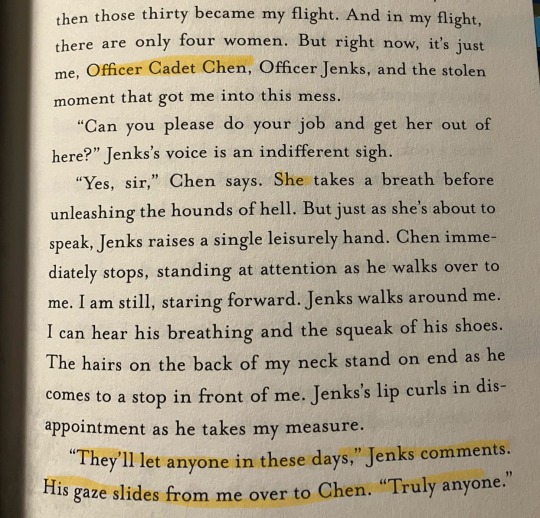
So, Carol and Maria must enter USAFA no earlier than 1978 to be two or more years younger than Chen, and must graduate no later than 1983 for Monica to exist. To comply with the marketing blurb’s declaration that this book takes place “in the 80s”, let’s say that Carol and Maria’s first year is the 1979-1980 school year.
(End excerpt)
In conclusion, Maria and Carol were born in 1960 or 1961 (with pretty equal likelihood of which birthday makes them 18 at the start of the book, since USAFA basic happens the summer before the school year), not 1965. It would be impossible for them to have done basic training in 1984 as in the production drawing, because they would have to have already graduated and be well on their way to test pilot school which is a whole other policy can of worms before Monica’s birth in 1983 or 1984.
In conclusion conclusion, Carol is ~34 in Captain Marvel and ~64 in The Marvels, and the MCU should hire fans to fact check for them.
#thank u blindluck for bringing my attention to this wiki I had such a fun time on this rabbit hole#the marvels#captain marvel#carol danvers#maria rambeau#higher further faster book#carolmaria#danbeau#monica rambeau
84 notes
·
View notes
Text
✨Fairies Finds✨: New Early Artwork and Promotional Video from 2005 Disney Fairies Japan Website with Gail Carson Levine- Author of Fairy Dust Trilogy
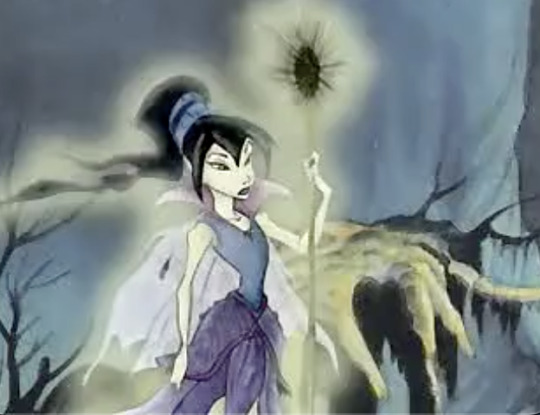
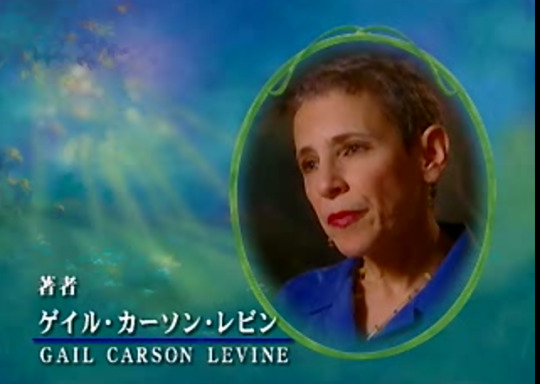
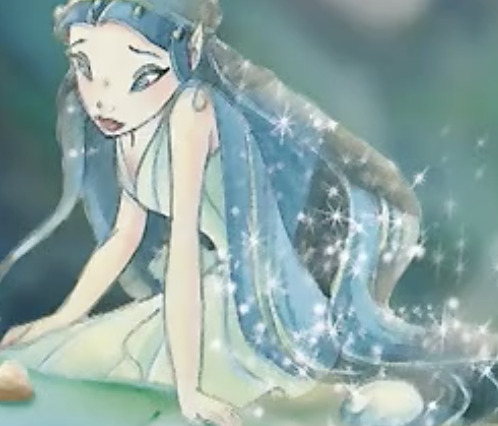
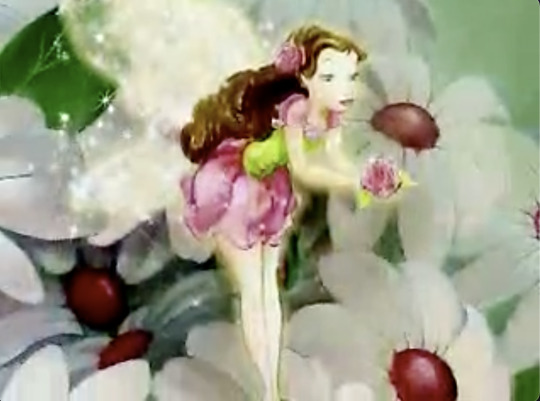
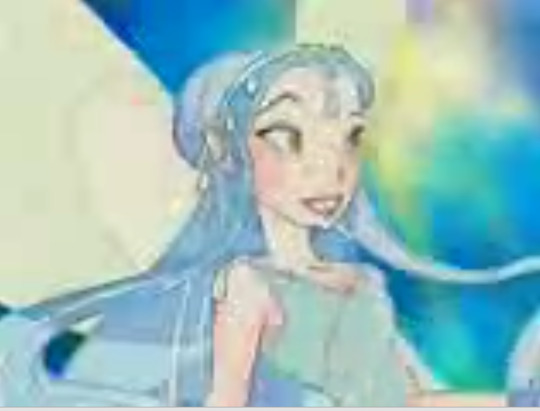
Fly with you everyone and happy Friday the 13th! I have been looking into Disney Fairies pre-release stuff ever since some early stuff was posted into Art of Disney Fairies. I have also been interested in media preservation since late 2017 when I found Web Back Then. Truthfully, despite having this interest when trying to find the old Disney Fairies games from my childhood- I never really shared much with the world. I feel like I should remedy that! (this find is relatively recent though I found it yesterday!)
This is a video I found on the Internet Archive from disneyfairies.jp, a promotional page on the Disney Japan website that seems disconnected from the main Disney Fairies page which was a clone of the original website. See here
Through some research the gist of the video is this:
The video starts with an introduction to the original Peter Pan by J.M. Barrie, which is interjected with clips from Disney's Peter Pan. Then we see more artwork of Disney Fairies- including unfamilar designs including early Vidia, Rani, Fira etc. According to Part of the Magic, Disney Fairies started development in early 2001- the series was launched fully in 2005. Then Gail (dubbed of course) begins to describe the plot of Fairy Dust and the Quest for the Egg whilst we see several pictures of this early Disney Fairies art. Interesting pictures as we get to see the very early designs of Disney Fairies characters that I have never seen before.
Interestingly, this video was never embedded on the page, you had to download it and play it through a video player such as Windows Media Player or Real Player, it was 2005 after all.

Here is the screen you'd see when you'd want to watch this promotional video. I recognize the leaves used in early flash games such as Lightball Challenge, Dragonfly Race etc.

A page on the website that I found with my decomplier, i couldn't view it normally!
I tried looking for this video in English to no avail, or any version on the internet. It must have only been accessible through this website.
Interestingly, I found this other page whilst doing my page digging thing again and found this, suggesting this was also a Japan exclusive and not for the American market ... and there is more early promotional stuff to be found in relation to Disney Fairies!

I also looked into one the main book artists on the creative team, Judith Holmes Clarke. She had a website I found on her IMDB page, that was live around 2017-2019. I saw this and wanted to add it as it had one of the stills in this video. It also has a sketch of Rosetta and Tink. This is what I found:
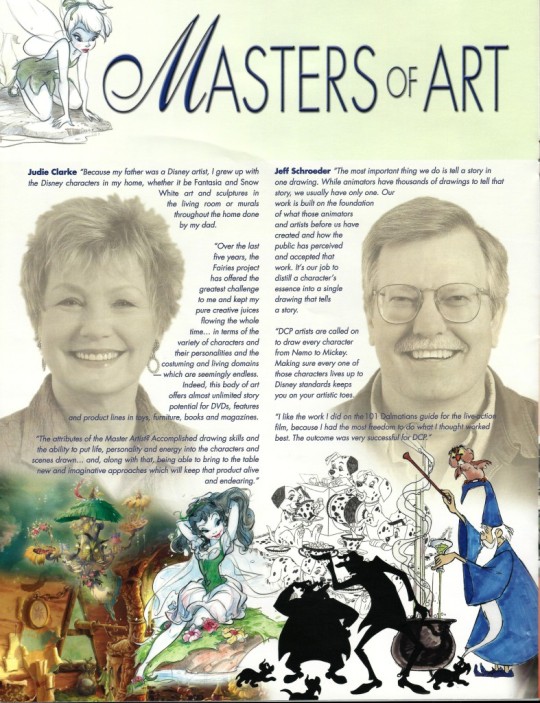
It is probably a scan of this magazine, Disney Newsreel, mentioned on her IMDB.
Overall, I'm super happy with this find and I'm so happy to share it with you all!! I will be happy to share more now that I'm publicly outing myself not just as this fan of children's fairy media- an archivist. gasp...
Also probably making a website/blog which I will share later and will be in the About Me link with my other socials.

And believe me, this is just the beginning
#disney fairies#art#found media#fairies finds#announcement#pixie hollow#disney#prilla#vidia#rani#bess#invidia#rosetta#beck#iridessa#silvermist#fawn#fairy dust and the quest for the egg#media preservation#gail carson levine#judith holmes clarke#tinker bell#books#pre release stuff#early stuff#my finds#video#region exclusives
175 notes
·
View notes
Text
what we know: The Acolyte was pitched sometime in early 2020. The Rise of Skywalker had just ended the movie saga. The Mandalorian, which kicked off disney+, had just finished its first season with great audience response. Lucasfilm was reorienting itself to streaming. Rayne Roberts loved the pitch, got Kathleen Kennedy who also loved it, and the show was greenlit.
the show premiered in summer 2024, after a generous marketing campaign (including a clip shown with The Phantom Menace rerelease, an original Victoria Monét song, and plenty of trailers and tv spots). multiple pieces of tie-in media were announced both before and during the show's airing (an Acolyte comic issue, a Kelnacca comic issue, a visual guide, an art reference book, two novels featurig show characters).
the high republic multimedia project (THR), in advanced development when the show was pitched and published continuously from early 2021, greatly influenced the show's development. the costuming is largely based on the look of THR, the show makes plenty of lore references, and includes a main character from the books in its main cast. THR material coming out in summer 2024 has "a century before The Acolyte" prominently on the cover, the upcoming show tie-ins are largely written by THR authors, and often feature other THR characters.
the show was expensive, with a long production period and a great focus on the technical aspects - building large elaborate sets, filming on location in Madeira, detailed stunt sequences with a lot of actor involvement, plenty of attention given to costumes, make-up and creature design. the cast included many high-profile actors. everything suggests the show had full confidence of lucasfilm.
what i'm gonna speculate: lucasfilm was playing the long game with this show, or hoping to. cancelling the show this early was unexpected.
in 2019 star wars was quite literally centered on the original trilogy. the seven decades or so around the OT contained all currently canon star wars media, even as the franchise was spoken of as one with 25,000 years of history. the following years would plug up even more empty spots on the timeline, with the projects often overlapping. this gave the writers much less creative freedom, which was the whole point of decanonizing all pre-2014 media aside from films and shows. over time, fans started clamoring for onscreen content set outside of the known eras, and there were more and more voices in and outside of the fandom exhausted with fanservice (the glup shitto phenomenon).
The Acolyte was set in a whole new era, as far as onscreen content goes, and its only legacy character was from children's and YA books most viewers wouldn't be familiar with. it was specifically introduced as a show you wouldn't need any homework for. it had actors prominent in entirely different contexts (Matrix. sitcom. Squid Game. YA. superhero movies. independent films. relationship dramas.) and the cast was pretty international.
the show had a lot specifically for established fans - you could say it was the most wide-reaching in its star wars references, incorporating elements from every trilogy, the animated shows, canon books, oldschool legends lore, video games. but i believe it was mostly meant to attract people who were not previously fans, and especially target demographics that were underrepresented in the fandom. draw in international audiences, young people who were around for other star wars properties but they never caught their interest, women who either weren't in the fandom or felt pushed away by the reaction to The Last Jedi.
lucasfilm execs definitely weren't planning for viewing numbers comparable to Obi-Wan Kenobi, or even Ahsoka, since those are characters people are already invested in. i think lucasfilm expected the show's audience to grow over a longer period, since plenty of people might check it out because it seems cool and they like an actor in it, and hopefully stick around to watch other star wars and become new fans of the franchise. the audience would get a chance to establish itself through new viewers watching it outside the couple weeks when it aired originally - it's a streaming platform, after all - and the show would have a solid fandom for its second season (which they were clearly planning to make).
these new fans would keep disney+ in order to check out other star wars shows and film, and keep buying star wars stuff over the hiatus. even if they were only into The Acolyte and their interest never expanded beyond that, there were many merchandising products and tie-in materials coming out. the comics and books would have connections to THR, hopefully getting an influx of readers before the initiative finishes next year and boosting sales of already published works. the THR readers who weren't interested in the show originally would see all their favorite authors writing stuff for it and check it out, too.
but then someone higher up decided to cancel it a month after airing so no i guess
33 notes
·
View notes
Text
crazy to say it but if you watch the fearlessly forward video from 2019 on mclaren’s channel compared to the here we go again video from 2020, the first video lando is running alone, swimming and all ready for the season and in the second, he and carlos are doing it again but together, running in the same place, waking up at the same time, living together (???) and it’s filled with angst but why? this is meant to be a marketing video brother!!!
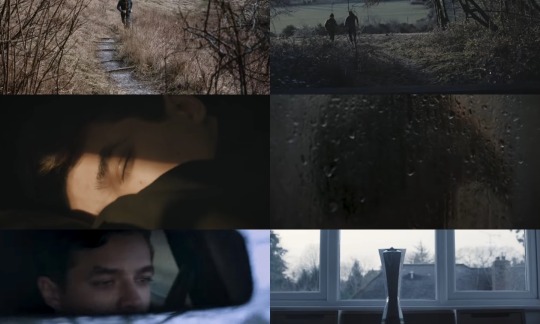
like, henrik was so dedicated that he filmed carlos naked and in the shower and lando waking up in bed. what. then heavy symbolism on brazil with the trophy, with the two embracing each other, then running deeper into the forest together. it’s so weird i really have to give props to henrik for making the og official ship edit of the two drivers he works with and knows personally. crazy.
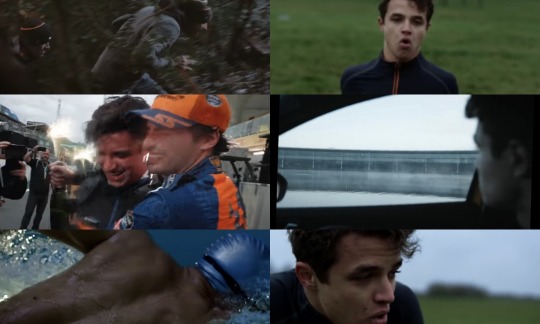
223 notes
·
View notes
Text
Chaeri as the 8th and youngest member of BTS
CHAERI'S MASTERLIST
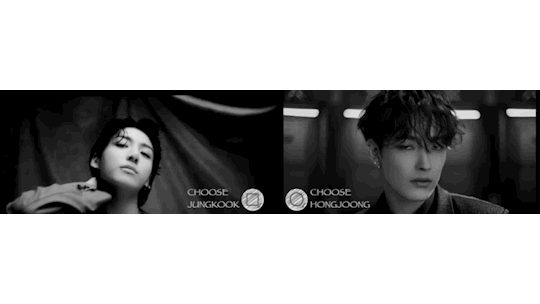
CHAERI'S LOVE LIFE IN A TIMELINE
Love interests - 2015 to present
A summary of dating, rejections and any romantic interaction between Chaeri and others
The night market - april 2013
In which Chaeri and Jungkook sneak out of the dorms during the trainee period
Chaeri and Jungkook as babysitters - march 2017
In which a little girl is asked to keep Chaeri and Jungkook's biggest secret
Isn't it wrong so good? - April 2017
In which Chaeri and Jungkook need some time alone
How the members reacted to Chaeri and Jungkook's relationship
A love letter - summer 2017
In which Chaeri and Jungkook have a sneaky little date
Clingy Jungkook [a private Instagram post] - april 2018
Red gardenias - october 2018
In which a bouquet of flowers can be worth more than a thousand words
Chaeri's Bodyguard Betrayal - early 2019
In which we learn why Chaeri's bodyguard betrayed her
Silver lips 1/2 | Silver lips 2/2 - november 22, 2021, American Music Awards
In which Chaeri has an incredible urge to be the first to kiss her ex-boyfriend, Jungkook, who has just had his lip pierced
2 a.m. decisions - december 2021
In which a kiss leads Chaeri to a forced hiatus and, when she returns to Korea for New Year's Eve, Jungkook decides to visit her
A look through Chaeri and Hoongjoong's relationship - 2022 to present
BTS and ATEEZ's reaction to Chaeri and Hongjoong - 2022
Chaeri and Hongjoong first times - january/february 2022 to june 2022
Hongjoong and Chaeri caught in intimate moments - june 2022
In which Chaeri and Hongjoong end up on the front pages of local gossip papers
Fire mouth - june 2022
In which Hongjoong finds himself addicted to something he dislikes, only because he tastes it from Chaeri's lips (+ a video about them parenting Ateez)
The Price of Love in the Public Eye - july 2022
In which Hongjoong experiences being in a public relationship as a kpop idol
How Hongjoong and Chaeri's relationship broke all the logics of the KPOP industry - second half of 2022
In which Hongjoong and Chaeri break all the logic of KPOP by being overly public with their relationship
When night comes - July/August 2022
In which Chaeri stays overnight at Hongjoong's for the first time
If by Chance - august 2022
Snippets of Jungkook's perspective on the relationship between Hongjoong and Chaeri
Checkered Flag for Love - september/october, 2022
In which Chaeri takes Hongjoong to a GP
Trip Vlog - Stockholm - october 2022
In which Chaeri and Hongjoong go to Stockholm for a vacation
Romantic Hongjoong [an instagram post] - november 2022
Jungkook's 03.03.2023 live - live moments recalling January/February 2023
In which fans, during the live, notice obvious references of Chaeri and Jungkook during January and February 2023
Jungkook's 14.03.2023 live - live moments recalling January/February 2023
In which Jk's live on 14.03.23 is nothing more than a summary of his time with Chaeri at the beginning of the year
Eden's wedding - late january, 2023
In which Hongjoong cannot help but notice the way Jungkook looks at Chaeri
Calvin Klein 1/3 | Calvin Klein 2/3 | Calvin Klein 3/3 - march 2023
In which posing for Calvin Klein turns out to be a more challenging job than she'd ever thought it would be
Seoul Love On tour 1/2 | Seoul Love On Tour 2/2 (Two Ghosts) - march 20, 2023
In which Harry Styles' post-concert doesn't go as planned for Chaeri, as Jungkook has something to tell her
Calvin Klein Event - may 10, 2023
In which fans receive informations about Chaeri and Jungkook's argument
A Break-up? Speculation and theories - june, 2023
In which medias speculate about a possible breakup between Chaeri and Hongjoong
Chaekook to LA - june, 2023
K-talk: More speculations about a possible Break-up - july, 2023
In which a podcast talks about a possible breakup between Chaeri and Hongjoong
Seven - july, 2023
In which Chaeri is the guest star in Jungkook's new MV
Why do you love? - august, 2023
In which Hongjoong releases a song about a love that has ended, and the fans turn against Chaeri
You came - december 11, 2023
The night before Jungkook's enlistment
263 notes
·
View notes